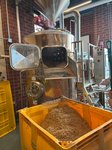A Mt. Sinai-based developer is seeking permission to erect two new two-story, two-family homes with two attached garages each, in Patchogue at 243 and 247 West Avenue. The premises are currently …
This item is available in full to subscribers.
We have recently launched a new and improved website. To continue reading, you will need to either log into your subscriber account, or purchase a new subscription.
If you had a login with the previous version of our e-edition, then you already have a login here. You just need to reset your password by clicking here.
If you are a current print subscriber, you can set up a free website account by clicking here.
Otherwise, click here to view your options for subscribing.
Please log in to continue |
|


A Mt. Sinai-based developer is seeking permission to erect two new two-story, two-family homes with two attached garages each, in Patchogue at 243 and 247 West Avenue. The premises are currently located in the C Residential Zone.
The zoning board met on April 19 to first hear the applicant who is seeking owner-occupied dwellings. However, according to the board, the applicant is a corporation and cannot physically live in both homes, which has caused a concern.
In addition, the Building Department found that the number of bedrooms being proposed for each house was “excessive,” and with only a one-car garage for each house and a small driveway, there would be overflow on West Avenue. The property is located across from the ingress and egress of the Oar House, which the board said is already congested.
One of the homes on the lots had been demolished by the developer; the other, more southern property was demolished prior to their ownership after a fire. Both were one-story, single-family cottage homes similar to the other homes in the area.
The application was adjourned and will meet again sometime in June.
SEEKING SEWAGE SOLUTIONS
The Village of Patchogue Department of Public Works superintendent Joseph Dean presented the board of trustees with a sewage treatment issue earlier this month.
Several complaints were filed by nearby residents, including those in the Riverwalk development, Dean explained, due to odors coming from the pre-treatment plant located on Hammond Street, the adjacent village sewage treatment plant, operating for the Blue Point Brewery.
The smells, he noted, were caused by charcoal carbon drum failures, which basically circulate the air and have been unintentionally overloaded.
“Because of the high loading from the brewery, the filters were non-functioning,” he said.
Typically, the filters, he said, are changed every three to four years, but were expiring much faster due to the heavy loading from the brewery connection. According to an agreement, the brewery is permitted allow a certain limit of flow, including 20,000 gallons a day with a peak daily high of 40,000.
However, the brewery questioned the viability of the odors being directly caused by only their waste and also noted how community conscious they are.
“Since we opened the doors to our new facility in 2018, we’ve worked closely with the village, including the wastewater treatment facility, to be good partners,” said Carrie Shafir, general manager. “We are incredibly mindful of our environmental footprint, which includes wastewater efficiency. We will continue to work with the village of Patchogue on the important matters that affect our community.”
“Our relationship is very strong with Blue Point, and we’re working together to see whether they are part of the issue or not as the largest user,” added mayor Paul Pontieri, explaining that both the village and Blue Point Brewery’s engineers have been diligently working on it.
According to Dean, the village has already made several changes, which seems to have fixed the problem. Since then, the plant’s odors have quelled. Dean also attributed the reduced load to harvesting spent grains, which are a big contributor to the waste, causing clogs and sludge.
According to the brewery, they partner with local dairy farms, including the Town of Brookhaven’s Brew to Moo Program, to recycle their spent grains and yeast, which are used to produce all of the beer at Blue Point Brewery’s Patchogue facility.
“Once at these farms, spent yeast is used for land application, and spent grain is used for cattle feed,” said Shafir.
Comments
No comments on this item Please log in to comment by clicking here